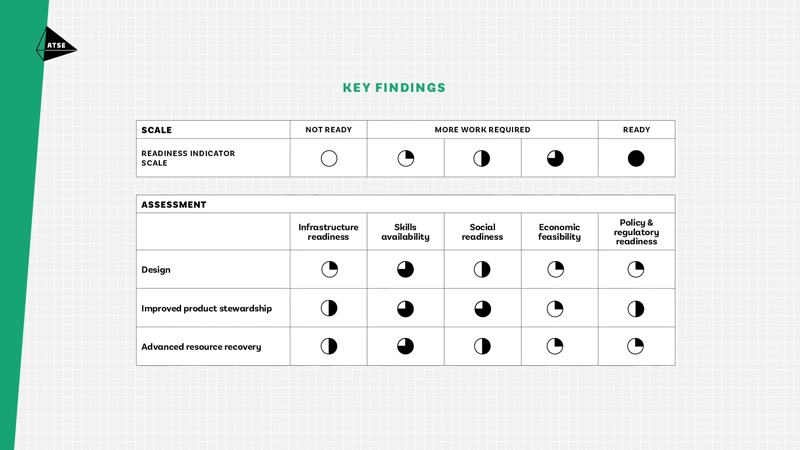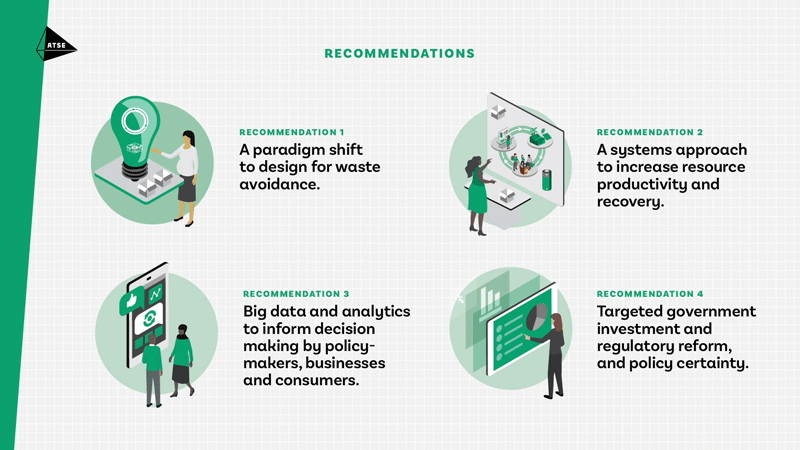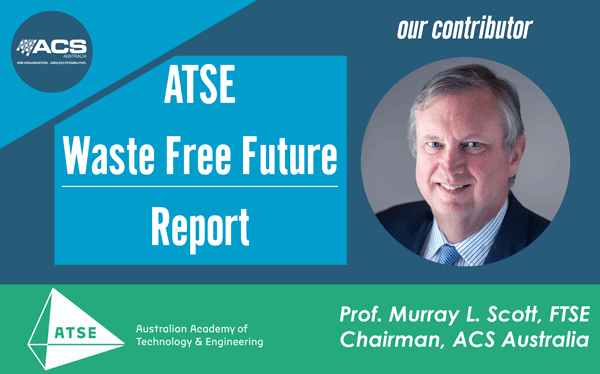The Australian Academy of Technology and Engineering (ATSE) late last year released a landmark report on the technology readiness in waste and resource recovery – “Towards a Waste Free Future”. It provides an expert assessment of Australia’s readiness to develop the necessary leading-edge capabilities in industry based on innovation and technology. Following a year of research and consultations, the ATSE team found that lack of economic feasibility is a critical barrier, but advanced technologies and engineering solutions offer great potential for diverting valuable resources from landfill and supporting the transition towards a circular economy.

ACS-A Chairman, Murray Scott, is an ATSE Fellow and he contributed to the expert working group that produced the report. One of the areas he focussed on was the contribution advanced engineering could make to achieving key objectives. The first of four recommendations in the report featured the potential for improved design and new technologies to enable avoidance of waste altogether by ensuring re-usability, repair-ability, part replacement and trade-in for remanufacture. The other three recommendations addressed the potential for a systems approach to increase resource productivity and recovery, big data and analytics to inform decision-making, and targeted government investment and regulatory reform.

ACS Australia is taking action towards a waste free future. By advanced design, smart material design and optimised repair we can reduce waste, see Murray Scott talk in this short video at the webinar Launch:
Waste and pollution are not accidents, but the consequences of decisions made at the design stage, where 80% of environmental impacts are determined.
Ellen MacArthur Foundation
Both the full report and a summary are available at the ATSE website, as well as the full launch webinar held on 18 November 2020.
